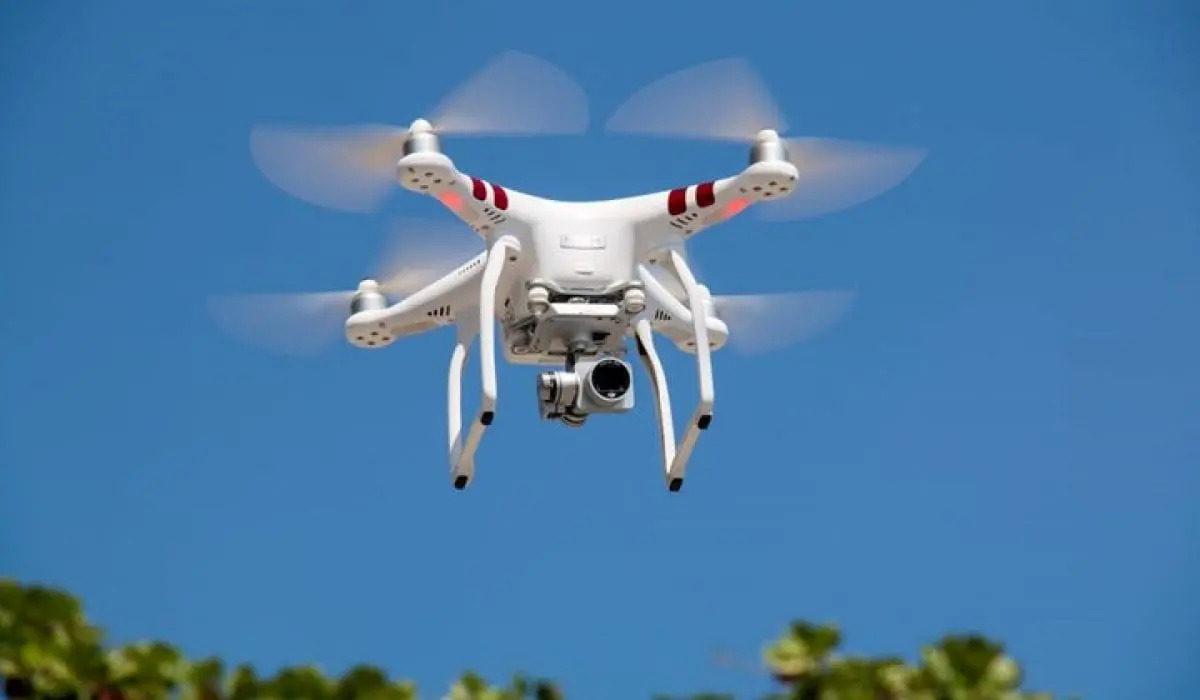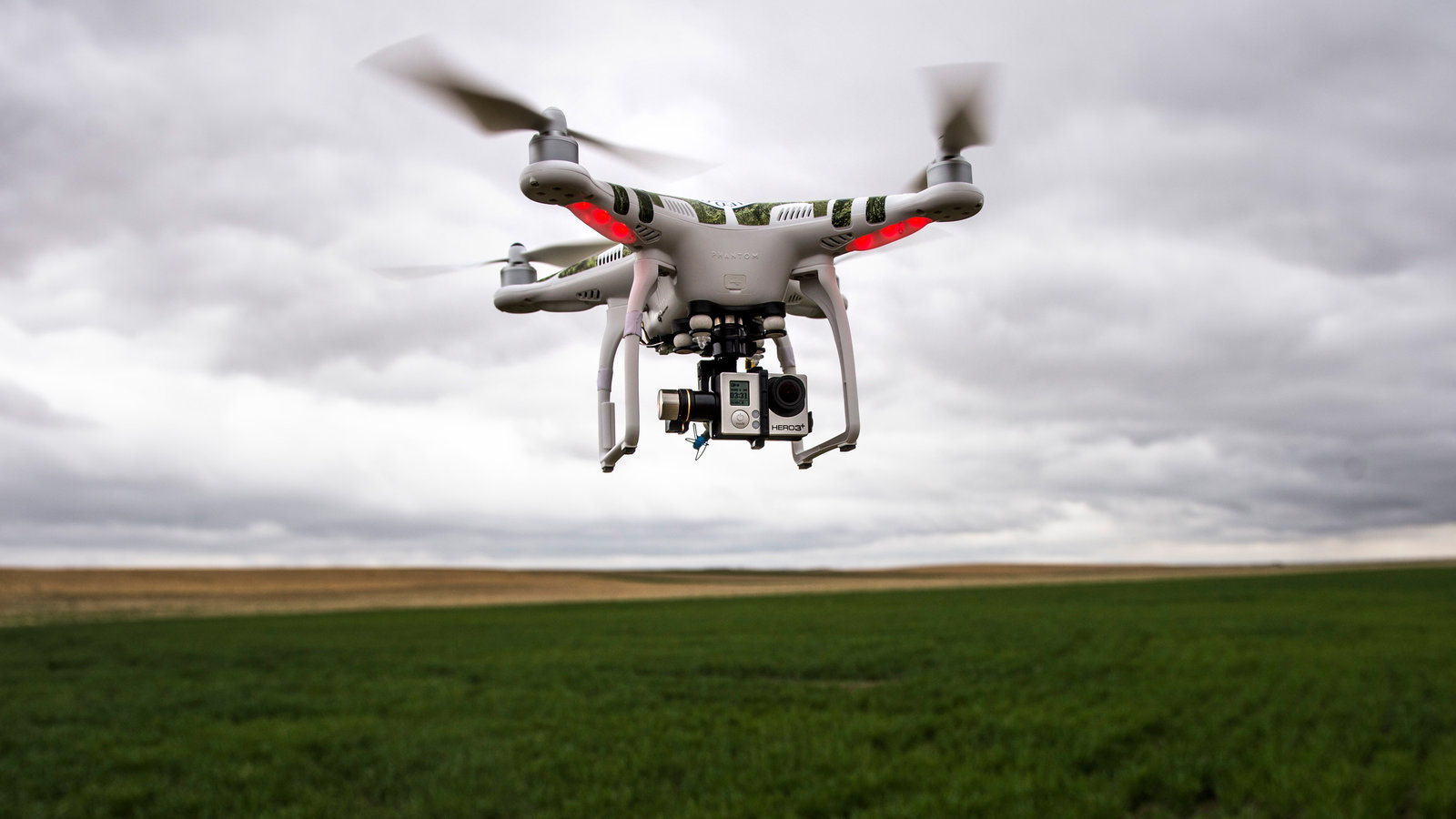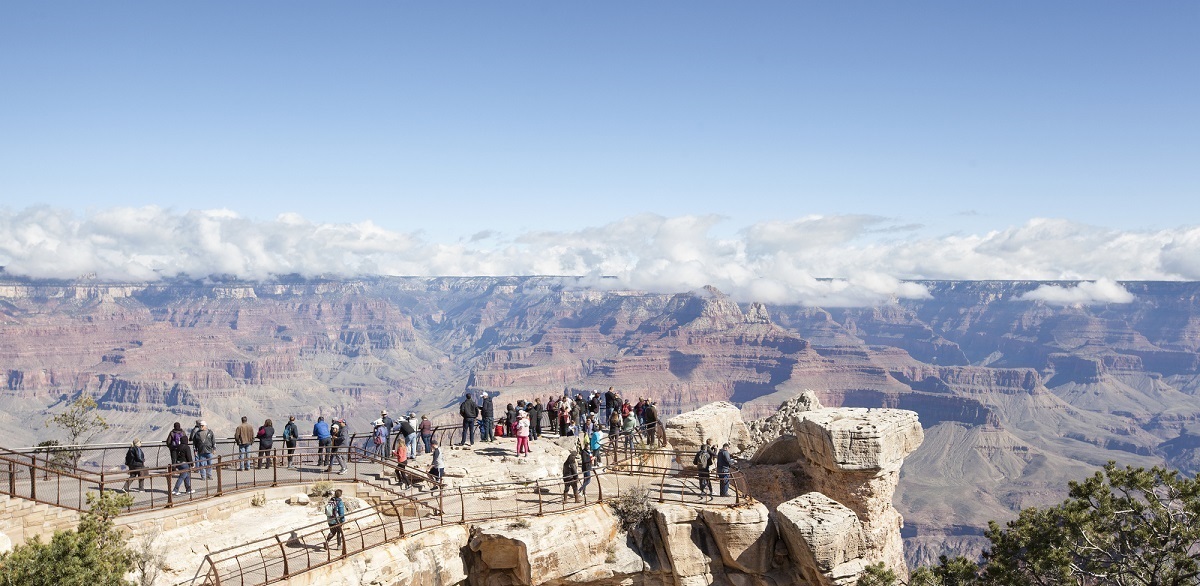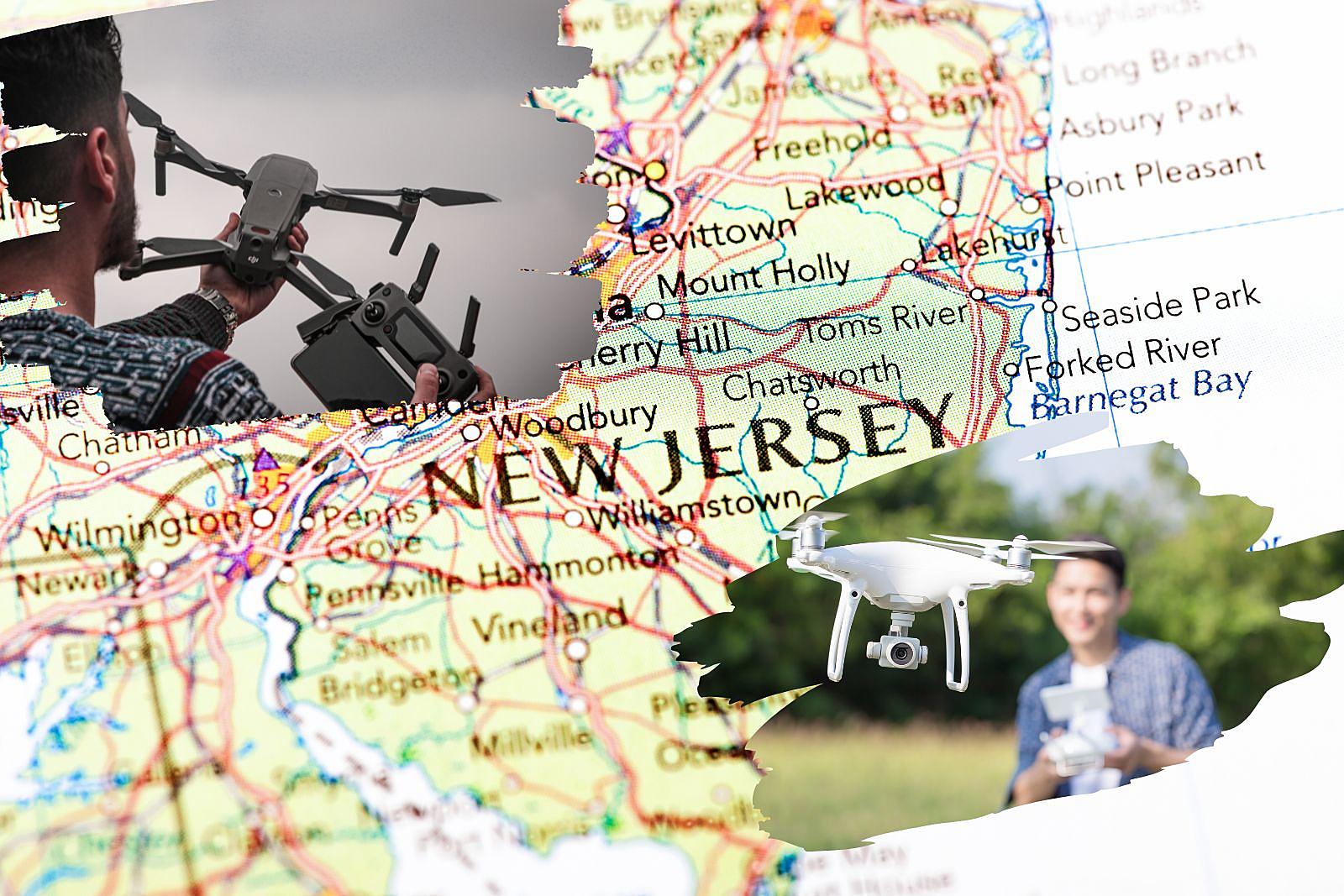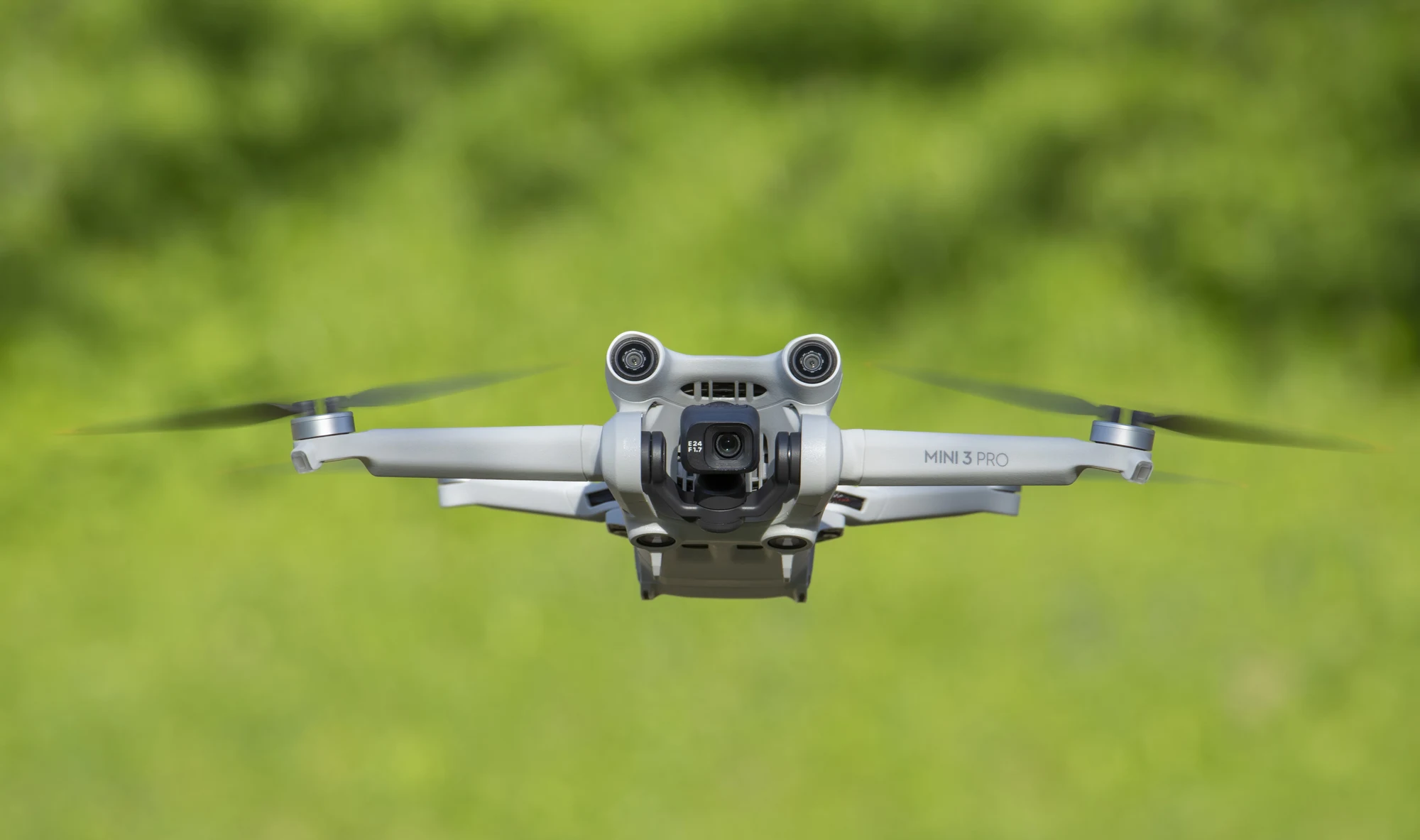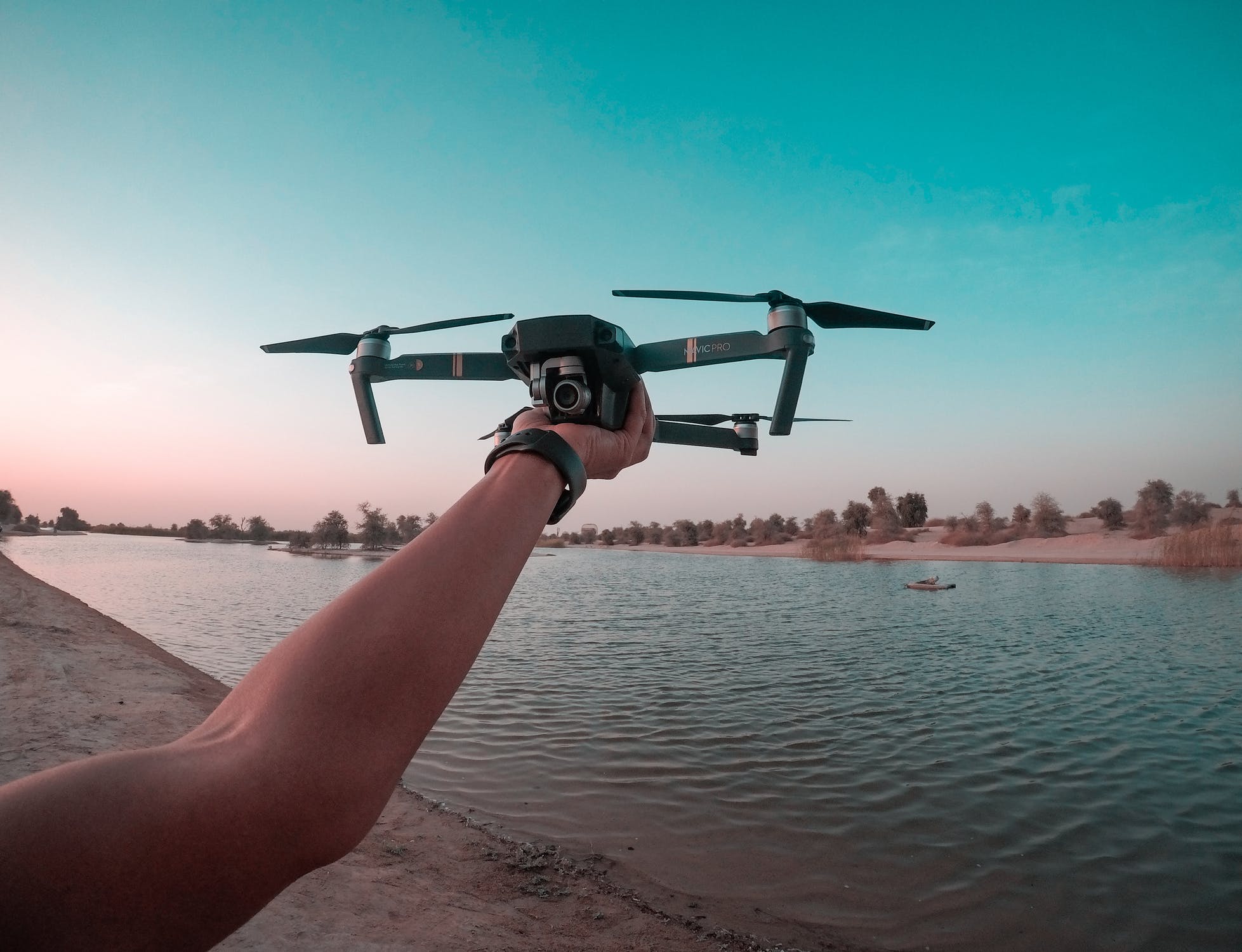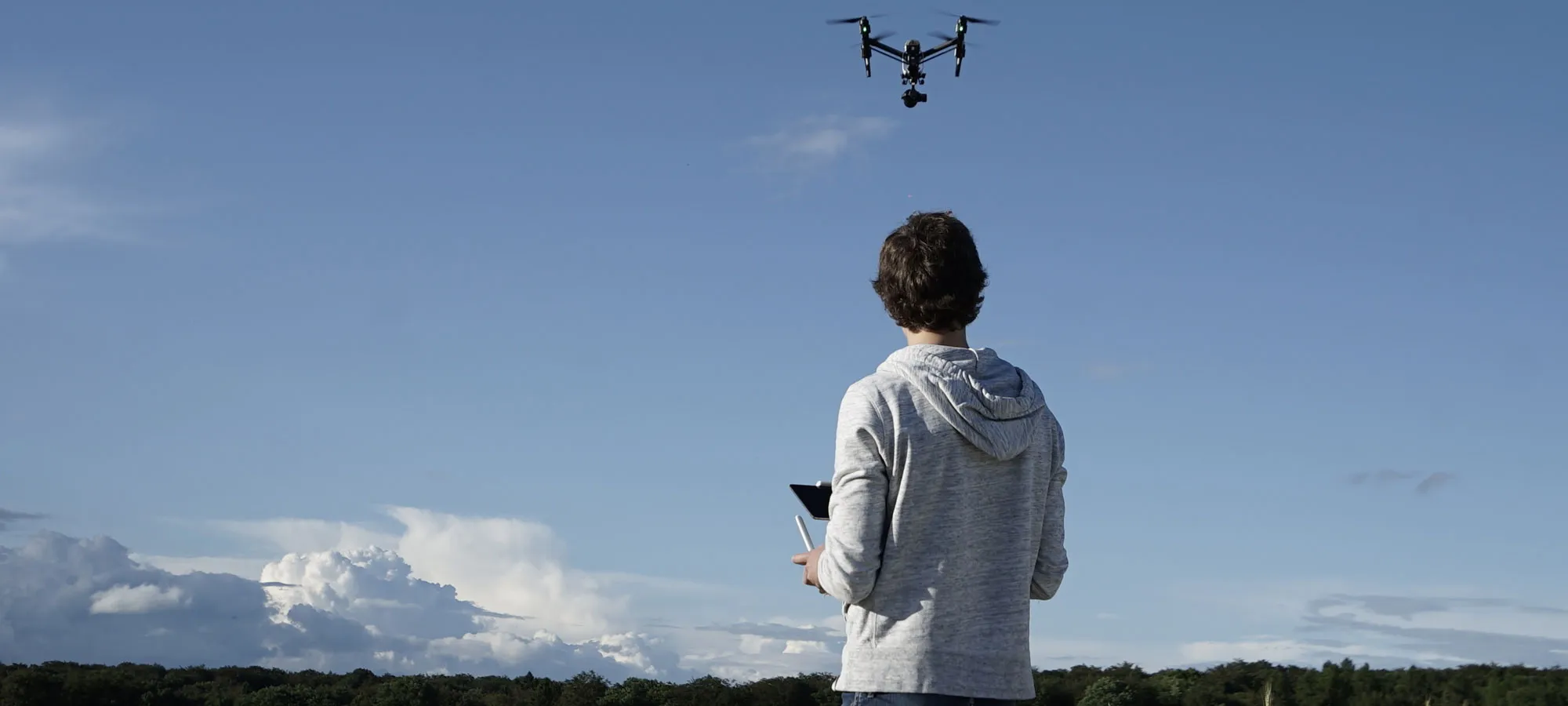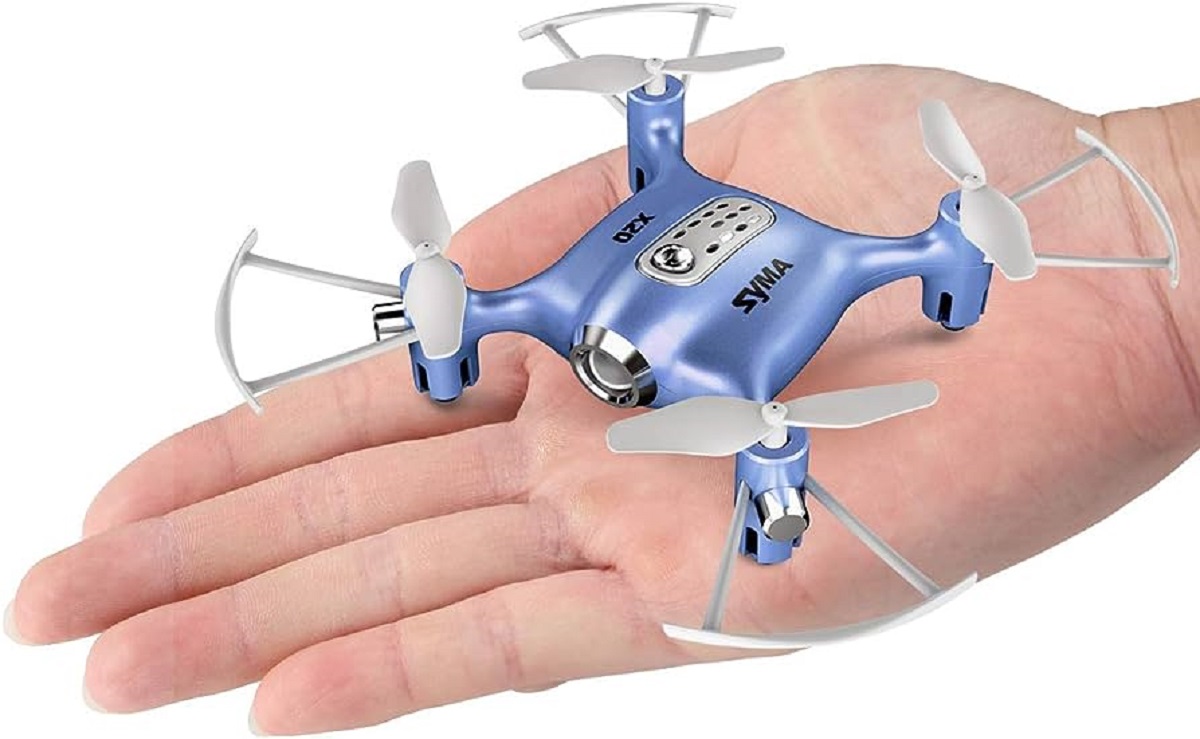Introduction
Welcome to Colorado, a state renowned for its breathtaking landscapes and outdoor adventures. Whether you’re a recreational drone enthusiast, an aspiring aerial photographer, or a professional filmmaker looking for stunning vistas, Colorado offers a plethora of opportunities to fly your drone and capture awe-inspiring footage. However, it’s crucial to familiarize yourself with the drone regulations and guidelines in the state to ensure a safe and legal flight.
Colorado boasts majestic mountains, scenic forests, pristine lakes, vast open spaces, and bustling urban areas, each offering a unique perspective from above. From the iconic Rocky Mountain National Park to the bustling cityscape of Denver, the options are endless. However, it’s important to note that not all areas in Colorado are drone-friendly, and there are specific restrictions and guidelines that you need to follow to ensure the safety of yourself, others, and the environment.
In this comprehensive guide, we will explore various locations where you can fly your drone in Colorado. We will discuss the regulations and guidelines provided by the Federal Aviation Administration (FAA) and other relevant authorities, as well as highlight some notable landmarks and areas you should consider for aerial photography and videography.
Before we dive into the specific locations, it’s essential to familiarize yourself with the general rules for flying drones in Colorado. These regulations apply to both recreational drone pilots and commercial operators in most cases. Make sure to follow the FAA’s guidelines, which include maintaining a line of sight with your drone, avoiding airspace restrictions, flying at or below 400 feet above ground level, and respecting the privacy and safety of others.
Now that we have a brief overview of what to expect, let’s delve into the exciting world of drone flying in Colorado. Whether you’re a local resident or are planning a visit, this guide will help you discover the best places to fly your drone in the Centennial State and capture breathtaking aerial footage that will leave you and your audience in awe.
Public Parks and Open Spaces
Colorado is home to numerous public parks and open spaces that provide excellent opportunities for drone enthusiasts to capture stunning aerial views. However, it’s important to note that each park may have specific regulations and guidelines regarding drone usage, so it’s essential to research and adhere to the rules of the specific park you plan to visit.
One popular park for drone flying is Red Rocks Park and Amphitheatre in Morrison. This iconic venue offers breathtaking views of towering red rocks and the surrounding natural beauty. However, drones are only permitted in designated areas, and you must obtain permission from the park management before flying your drone.
Garden of the Gods in Colorado Springs is another must-visit location for drone pilots. This enchanting park showcases stunning rock formations and beautiful landscapes. Drones are allowed in designated areas, as long as you follow the park’s guidelines and avoid flying over visitors or jeopardizing their safety.
If you’re in the Denver area, Washington Park is a popular spot for outdoor activities and drone flying. Known for its picturesque lakes, gardens, and pathways, this park provides ample space to launch your drone and capture breathtaking footage. However, be mindful of the park’s rules and regulations and avoid flying over crowded areas.
For those exploring the Rocky Mountains, Estes Park offers a stunning backdrop for aerial photography. With its proximity to Rocky Mountain National Park, drone pilots can capture majestic mountain ranges, alpine lakes, and wildlife. However, it’s important to note that drones are not allowed within the boundaries of the national park, so be sure to fly responsibly in the surrounding areas.
Other notable public parks and open spaces in Colorado where drone flying may be allowed include City Park in Denver, Cheesman Park in Denver, Sloan’s Lake in Denver, and Bear Creek Lake Park in Lakewood. Always check the specific park’s regulations and guidelines to ensure a safe and legal flight.
Remember, when flying your drone in public parks, be respectful of other visitors and wildlife, and always prioritize safety. Avoid flying over congested areas and maintain a safe distance from people, buildings, and animals. By following the rules and guidelines, you can enjoy a memorable drone flight while preserving the tranquility of these natural spaces.
National Forests and Wilderness Areas
Colorado is blessed with abundant national forests and wilderness areas that provide drone enthusiasts with unparalleled opportunities to capture the beauty of untouched nature. However, it’s important to be aware of the specific regulations and guidelines set by the respective governing bodies for each area to ensure a responsible and legal flight.
One of the most breathtaking locations for drone photography is the Maroon Bells-Snowmass Wilderness near Aspen. This area is renowned for its stunning mountain peaks, crystal-clear alpine lakes, and vibrant fall foliage. Drones are allowed in designated areas, but it’s crucial to obtain the necessary permits and follow the guidelines set by the Forest Service to protect the delicate ecosystem and preserve the tranquility of the wilderness.
The San Juan National Forest in southwestern Colorado is another fantastic destination for drone pilots. This forest spans over 1.8 million acres, offering diverse landscapes, including rugged mountains, dense forests, and pristine rivers. Drone flying is generally allowed in the forest, but always check for any specific restrictions or temporary flight restrictions (TFRs) that may be in place before taking off.
Rocky Mountain National Park, although restricting drones within its boundaries, still provides ample opportunities for drone pilots to capture breathtaking footage in the surrounding areas. With its towering peaks, alpine meadows, and enchanting wildlife, this region offers stunning backdrops for aerial photography. Always stay outside the park boundaries and follow any guidelines established by the park management.
Other national forests and wilderness areas in Colorado where drone flying may be permitted include Pike National Forest, Roosevelt National Forest, Gunnison National Forest, and Weminuche Wilderness. It’s essential to check with the respective forest service offices or visitor centers to obtain up-to-date information on any restrictions or permits required.
When flying your drone in national forests and wilderness areas, always prioritize safety and respect the environment. Avoid disturbing wildlife or intruding on their habitats, and be mindful of any fire restrictions that may be in place, especially during dry seasons.
By adhering to the regulations and guidelines set by the authorities and flying responsibly, you can capture breathtaking footage of Colorado’s pristine wilderness while preserving the integrity of these natural treasures for generations to come.
State Parks and Wildlife Areas
Colorado’s state parks and wildlife areas offer a wide range of diverse landscapes and habitats, making them ideal locations for drone enthusiasts to explore and capture stunning aerial footage. However, it’s important to familiarize yourself with the specific regulations and guidelines for each park to ensure a responsible and legal flight.
One popular destination for drone flying is Cherry Creek State Park in Aurora. This expansive park features a reservoir, open prairies, and abundant wildlife. Drones are permitted in designated areas, but make sure to check for any temporary flight restrictions or guidelines set by the park management. Avoid flying over crowded areas and respect the privacy of other visitors.
Rifle Gap State Park is another fantastic location for aerial photography. Located near Rifle, it offers scenic views of the reservoir, surrounding mountains, and unique rock formations. Drones are generally allowed, but always check for any park-specific regulations before flying to ensure a safe and enjoyable experience for everyone.
For nature lovers, the Rocky Mountain Arsenal National Wildlife Refuge in Commerce City provides an opportunity to capture wildlife in their natural habitat. This protected area is home to various species, including bison, deer, and birds, making it a treasure trove for aerial photographers. However, it’s important to obtain proper permits and follow the guidelines set by the refuge management to minimize disturbance to the wildlife.
Barr Lake State Park in Brighton is another notable location for drone enthusiasts. This park boasts a picturesque lake, wetlands, and abundant bird species, making it a haven for birdwatchers and aerial photographers alike. Before taking off, ensure that you are familiar with the park’s regulations and guidelines for drone usage.
Other state parks and wildlife areas in Colorado where drone flying might be permitted include Chatfield State Park, Lory State Park, Golden Gate Canyon State Park, and Roxborough State Park. Always check for any specific restrictions, permits, or guidelines established by the respective park authorities to ensure compliance.
When flying drones in state parks and wildlife areas, keep in mind that wildlife preservation and visitor safety are of utmost importance. Avoid disturbing wildlife, maintain a safe distance from animals, and adhere to any restrictions regarding noise or altitude. By following the rules and respecting the natural environment, you can capture stunning aerial footage while ensuring the conservation of these precious state parks and wildlife areas.
BLM Lands and Wilderness Study Areas
Colorado is home to vast expanses of public lands managed by the Bureau of Land Management (BLM), offering drone enthusiasts ample opportunities to explore and capture the beauty of untouched wilderness. However, it’s essential to be aware of the regulations and guidelines specific to BLM lands and Wilderness Study Areas (WSAs) to ensure a responsible and legal flight.
One notable location for drone flying is the Canyons of the Ancients National Monument in southwestern Colorado. This unique landscape showcases ancient ruins, canyons, and stunning rock formations. Drones are generally permitted, but certain areas may have restrictions to protect cultural artifacts and sensitive sites. Always check for any specific guidelines and follow the regulations set by the BLM.
The Dominguez-Escalante National Conservation Area near Grand Junction is another fantastic destination for aerial photography. This area features scenic canyons, waterfalls, and dramatic desert landscapes. While drones are typically allowed in BLM-managed lands, it’s important to adhere to any guidelines or restrictions in place to protect the natural and cultural resources.
Wilderness Study Areas, such as the Gunnison Gorge Wilderness Study Area and the Black Ridge Canyons Wilderness Study Area, also offer stunning vistas and opportunities for drone enthusiasts. However, it’s crucial to note that different regulations may apply within these areas, and drones may be restricted or prohibited. Always check with the local BLM office or visitor center for specific guidelines before flying your drone.
Other BLM lands and Wilderness Study Areas in Colorado where drone flying may be permitted include the McInnis Canyons National Conservation Area, Browns Canyon National Monument, and Gunnison Gorge National Conservation Area. However, it’s important to remember that regulations can vary across different locations, so research and understanding the specific guidelines for each area are essential.
When flying drones in BLM lands and Wilderness Study Areas, it’s crucial to prioritize safety and respect for the environment. Avoid flying over sensitive habitats, cultural sites, or areas where wildlife may be disturbed. Adhere to any fire restrictions, respect private property boundaries, and pack out any trash or debris to leave no trace behind.
By following the regulations and guidelines set by the BLM and demonstrating responsible drone usage, you can capture breathtaking aerial footage while preserving these pristine landscapes for future generations to enjoy.
FAA-Approved Drone Zones and Airports
When flying a drone, it’s essential to be aware of the airspace restrictions and regulations set by the Federal Aviation Administration (FAA). Colorado has designated several FAA-approved drone zones and airports where drone flying is permitted, providing a controlled and safe environment for pilots.
One such location is the Cherry Creek State Park Model Aircraft Flying Field in Aurora. This dedicated area is specifically designed for model aircraft and drone enthusiasts. It offers open space, designated flight zones, and facilities to ensure a safe and enjoyable flying experience. However, it’s important to note that this site requires a specific permit, and pilots must adhere to the guidelines set by the park management.
The Sports Park Complex in Colorado Springs also features an FAA-approved drone zone. This designated area provides a controlled environment for drone pilots to practice and fly their drones. Pilots must register with the local authorities and comply with the rules and regulations set by the park to ensure safety and prevent any interference with other park activities.
In addition to FAA-approved drone zones, certain airports in Colorado have designated areas for drone flying. These designated airspace areas allow drone pilots to fly in proximity to the airport while adhering to specific rules and guidelines. However, it’s crucial to obtain permission from the airport authorities and follow the established procedures to ensure safety and avoid any disruptions to air traffic.
It’s worth noting that drone flying near airports requires special attention and compliance with FAA regulations. Airport restrictions and airspace classifications can change frequently, so it’s essential to check for any temporary flight restrictions (TFRs) or other airspace limitations before flying in these areas.
When utilizing FAA-approved drone zones or flying near airports, it’s important to follow the FAA’s guidelines for safe flying practices. Maintain a line of sight with your drone, avoid flying over people or vehicles, and respect the privacy and safety of others. Stay informed about any updates or changes to airspace regulations, and always prioritize safety and responsible drone operation.
By utilizing FAA-approved drone zones and following the established guidelines for flying near airports, you can maximize your safety and enjoy a seamless and controlled drone flying experience in Colorado.
Private Lands with Permission
While public parks and designated areas offer excellent opportunities for drone flying in Colorado, there may also be possibilities to fly on private lands with the permission of the landowners. This opens up a whole new world of potential flight locations, allowing you to capture unique angles and perspectives in less crowded and less regulated environments.
If you have a specific location in mind, such as a private ranch or property, it’s essential to reach out to the landowner or property manager to obtain permission for drone flying. Explain your intentions, assure them of your responsible flying practices, and inquire about any specific restrictions or guidelines they may have in place.
By gaining permission to fly on private lands, you have the opportunity to explore stunning landscapes that may not be accessible to the general public. Whether it’s a picturesque vineyard, a sprawling farm, or a remote mountain cabin, these private lands can provide unique and exclusive aerial photography and videography opportunities.
It’s important to approach private landowners with respect and professionalism. Understand that they have the right to grant or deny permission, and their decision should be respected. Building a positive relationship with landowners can also lead to potential future opportunities for drone flying in such locations.
When flying on private lands, it’s essential to adhere to the guidelines and restrictions set by the owners. Respect any guidelines related to flight altitudes, flight paths, or time restrictions. Also, keep in mind the privacy of the landowners and any neighboring properties, ensuring that your flight does not infringe upon their rights or cause any discomfort.
Always prioritize safety when flying on private lands. Be mindful of any obstacles or hazards in the area, survey the surroundings before taking off, and monitor environmental factors such as wind and weather conditions. Fly responsibly, maintain a line of sight with your drone, and avoid flying over crowded areas or sensitive locations.
Remember, the opportunity to fly drones on private lands is a privilege and should be treated with utmost respect. By obtaining permission, following the landowner’s guidelines, and demonstrating responsible behavior, you can explore unique and breathtaking landscapes while maintaining good relationships with landowners.
Local Regulations and City Ordinances
When it comes to flying a drone in Colorado, it’s important to be aware of the local regulations and city ordinances that may apply. Different cities and towns may have specific rules in place to ensure the safe and responsible use of drones within their jurisdictions.
One example is the city of Denver, which has its own set of regulations regarding drone operation. In Denver, drones are prohibited within a 500-foot radius of outdoor events, stadiums, and amphitheaters during scheduled events. It’s also important to be mindful of privacy concerns and avoid flying over private properties without permission.
Other cities and towns in Colorado may have their own unique ordinances concerning drone usage. It’s crucial to research and familiarize yourself with the specific regulations in the area where you plan to fly. This information can usually be found on the city or town’s official website or by contacting the local authorities responsible for enforcing drone regulations.
Additionally, some areas may have restrictions on launching and landing drones in certain locations. For example, flying drones in high-density urban areas or near busy roads may be prohibited for safety reasons. Always check for any specific restrictions or no-fly zones established by the local authorities.
It’s important to note that these local regulations and city ordinances may change or be amended over time. Staying updated with any changes is crucial to ensure compliance and maintain a safe and legal flight. Regularly check for any new ordinances or updates issued by the local authorities or attend local drone enthusiast meetings where such information may be shared.
By following the local regulations and city ordinances, you can help maintain a positive relationship with the community and minimize any negative impact or inconvenience caused by drone activities. Respect the privacy and safety of others, be mindful of noise pollution, and avoid any disruptive flying behavior that could tarnish the reputation of drone enthusiasts.
Remember, being a responsible drone pilot not only ensures your own safety but also contributes to the overall acceptance and responsible use of drones in local communities. By being knowledgeable about and adhering to the local regulations and city ordinances, you can enjoy flying your drone while respecting the needs and concerns of the areas you visit.
Drone-Friendly Events and Competitions
Colorado is home to a vibrant drone community that organizes various events and competitions for drone enthusiasts. These events not only provide an opportunity to showcase your flying skills but also encourage the exchange of knowledge and experiences among fellow drone enthusiasts.
One notable event in Colorado is the Colorado Drone Summit and Expo held in Denver. This annual event brings together industry professionals, enthusiasts, and innovators from around the region. It offers workshops, demonstrations, and networking opportunities, allowing participants to stay updated on the latest trends and technologies in the drone industry.
Another exciting event is the Drone Racing League (DRL), which occasionally organizes races in Colorado. These high-speed, adrenaline-filled races involve pilots maneuvering their drones through challenging courses, showcasing their speed and agility. The races are open to both amateur and professional pilots, providing an exhilarating experience for participants and spectators alike.
The Colorado Springs Miniature Aircraft Association (CSMAA) regularly hosts drone racing events and meets at their flying fields. These gatherings provide a platform for pilots of all skill levels to come together, compete, and share their passion for drones. It’s an excellent opportunity for beginners to learn from experienced pilots and for experienced pilots to showcase their skills.
Other drone-friendly events in Colorado include aerial photography and videography workshops, drone film festivals, and drone demonstrations at technology and innovation expos. These events allow drone enthusiasts to sharpen their skills, discover new techniques, and connect with like-minded individuals in the community.
Participating in drone-friendly events and competitions not only allows you to showcase your piloting skills but also provides an excellent opportunity to engage with the drone community, build connections, and learn from others. These events often offer a blend of education, entertainment, and friendly competition, creating a supportive and inspiring atmosphere.
When participating in drone events, it’s important to adhere to the rules and guidelines set by the event organizers. Safety should always be a top priority, and respectful behavior towards fellow participants, spectators, and the event location is crucial.
Whether you are a seasoned professional or a beginner just starting in the world of drones, participating in drone-friendly events and competitions in Colorado is a fantastic way to fuel your passion, gain valuable experience, and be part of a thriving drone community.
Safety Guidelines and Best Practices
When flying a drone in Colorado, or anywhere else, it’s crucial to prioritize safety above all else. Ensuring the safety of yourself, others, and the environment should always be your top concern. Here are some essential safety guidelines and best practices to keep in mind:
1. Know the Laws: Familiarize yourself with the drone regulations and guidelines set by the Federal Aviation Administration (FAA) and any local ordinances or regulations specific to the area where you plan to fly. Understanding and adhering to these rules will help you fly legally and responsibly.
2. Plan and Prepare: Before each flight, thoroughly plan your flight path, taking into account any airspace restrictions, potential obstacles, and environmental conditions. Check weather forecasts, wind speeds, and any applicable temporary flight restrictions (TFRs) that may be in place.
3. Maintain Line of Sight: Always keep your drone in your line of sight, as per FAA guidelines. This allows you to have better control, avoid collisions, and be aware of any potential hazards in the surrounding area.
4. Respect Privacy and Property Rights: Do not fly your drone over private property without the permission of the landowner. Respect individuals’ privacy and avoid capturing footage that may infringe upon their rights. Fly responsibly and ethically.
5. Fly in Safe Locations: Choose your flying locations wisely. Avoid crowded areas, airports, and restricted airspace. Fly in open spaces away from people, vehicles, and wildlife to minimize the risk of accidents or interference.
6. Be Mindful of Battery Life: Monitor the battery life of your drone and plan your flights accordingly. Avoid flying until the battery is depleted, always leave enough power for a safe return and landing.
7. Perform Pre-flight Checks: Before each flight, conduct a thorough check of your drone, including the battery, propellers, and other components. Ensure that everything is in proper working condition to minimize the risk of mid-air malfunctions.
8. Follow Manufacturer’s Instructions: Adhere to the manufacturer’s instructions for operating your specific drone model. This includes proper charging, storage, and maintenance procedures to maximize the lifespan and performance of your drone.
9. Avoid Flying in Adverse Conditions: Exercise caution when flying in adverse weather conditions such as high winds, rain, or snow. These conditions can affect the stability and control of your drone, increasing the risk of accidents.
10. Always Have a Backup Plan: Prepare for unexpected situations. Have a backup plan in case of emergencies or technical difficulties, such as loss of control or drone malfunction. This may include having a spotter or having a designated safe landing area in mind.
By adhering to these safety guidelines and best practices, you can significantly reduce the risk of accidents and ensure a safe and enjoyable drone flying experience in Colorado. Remember, safety should always be the priority when operating a drone, both for yourself and the community around you.
Resources for Further Information and Updates
Staying informed and up-to-date on drone regulations, guidelines, and industry developments is crucial for safe and responsible drone flying in Colorado. Here are some valuable resources where you can find further information and stay connected with the drone community:
1. Federal Aviation Administration (FAA): The FAA’s official website is a comprehensive resource for drone regulations, guidelines, and updates. Visit faa.gov/uas for information on drone registration, airspace restrictions, and safety guidelines.
2. Local Government Websites: Check the official websites of the cities, counties, and municipalities in Colorado where you plan to fly. They may have specific drone ordinances and regulations that you need to be aware of.
3. State Parks and Wildlife Management Websites: For information on flying drones in state parks and wildlife areas, visit the websites of the respective park or wildlife management authorities. They often provide guidelines, permits, and updates related to drone usage.
4. Colorado Division of Aeronautics: The Colorado Division of Aeronautics offers resources and information related to aviation in the state, including drone regulations and guidelines. Visit the division’s website for relevant information and updates.
5. Drone Enthusiast Groups and Communities: Joining drone enthusiast groups and communities can provide valuable insights, tips, and updates from fellow drone pilots. Platforms like Meetup.com and Facebook groups can help you connect with local drone enthusiasts and stay informed about local events and developments.
6. Drone Manufacturer Websites and Support Forums: Check the websites and support forums of the drone manufacturers you use. They often provide updates on firmware upgrades, safety guidelines, and troubleshooting information to ensure optimal performance and compliance with regulations.
7. Drone Magazines and Online Publications: Stay current with drone industry trends and news by subscribing to drone-focused magazines or following reputable online publications. These sources often provide insights into new technologies, industry developments, and best practices for drone flying.
8. FAADroneZone: The FAA offers the FAADroneZone, an online portal that provides resources for drone pilots, including a knowledge test, airspace information, and waivers for specific operations. Registering on this portal can keep you updated on regulatory changes and provide access to valuable resources.
Remember, regulations and guidelines may change over time, so consistently staying informed is crucial to ensure a safe and compliant drone flight. Regularly check these resources for updates and information, and engage with the drone community to share experiences and knowledge. Safe and responsible drone operation in Colorado relies on being well-informed and connected to the latest updates and developments in the ever-evolving world of drones.







